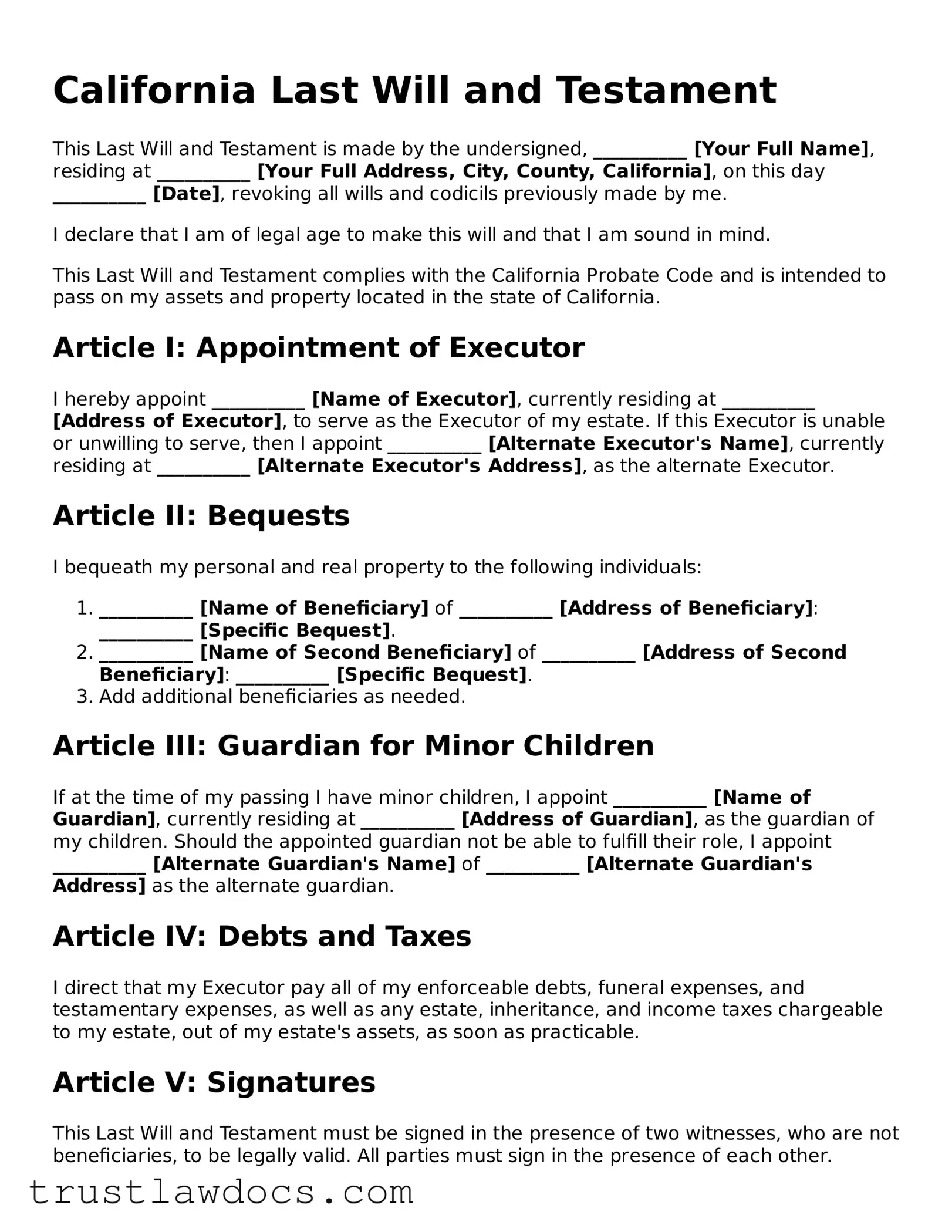California Last Will and Testament
This Last Will and Testament is made by the undersigned, __________ [Your Full Name], residing at __________ [Your Full Address, City, County, California],
on this day __________ [Date], revoking all wills and codicils previously made by me.
I declare that I am of legal age to make this will and that I am sound in mind.
This Last Will and Testament complies with the California Probate Code and is intended to pass on my assets and property located in the state of California.
Article I: Appointment of Executor
I hereby appoint __________ [Name of Executor], currently residing at __________ [Address of Executor], to serve as the Executor of my estate.
If this Executor is unable or unwilling to serve, then I appoint __________ [Alternate Executor's Name], currently residing at __________ [Alternate Executor's Address],
as the alternate Executor.
Article II: Bequests
I bequeath my personal and real property to the following individuals:
- __________ [Name of Beneficiary] of __________ [Address of Beneficiary]: __________ [Specific Bequest].
- __________ [Name of Second Beneficiary] of __________ [Address of Second Beneficiary]: __________ [Specific Bequest].
- Add additional beneficiaries as needed.
Article III: Guardian for Minor Children
If at the time of my passing I have minor children, I appoint __________ [Name of Guardian], currently residing at __________ [Address of Guardian], as the guardian of my children.
Should the appointed guardian not be able to fulfill their role, I appoint __________ [Alternate Guardian's Name] of __________ [Alternate Guardian's Address] as the alternate guardian.
Article IV: Debts and Taxes
I direct that my Executor pay all of my enforceable debts, funeral expenses, and testamentary expenses, as well as any estate, inheritance, and income taxes chargeable to my estate,
out of my estate's assets, as soon as practicable.
Article V: Signatures
This Last Will and Testament must be signed in the presence of two witnesses, who are not beneficiaries, to be legally valid. All parties must sign in the presence of each other.
Witnessed by:
- Witness #1 Name: __________ [Witness #1 Name], Signature: __________ [Witness #1 Signature], Date: __________ [Date]
- Witness #2 Name: __________ [Witness #2 Name], Signature: __________ [Witness #2 Signature], Date: __________ [Date]
Executed by:
__________ [Your Signature]
__________ [Your Name Printed]
Date: __________ [Date]
